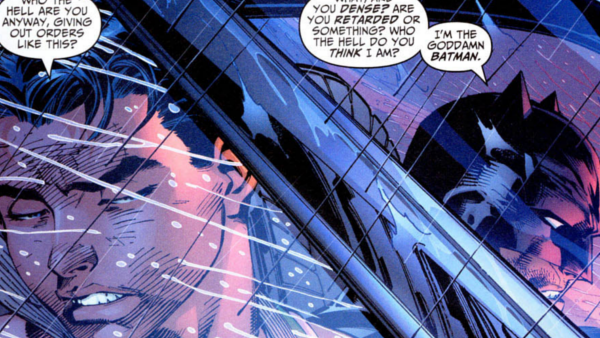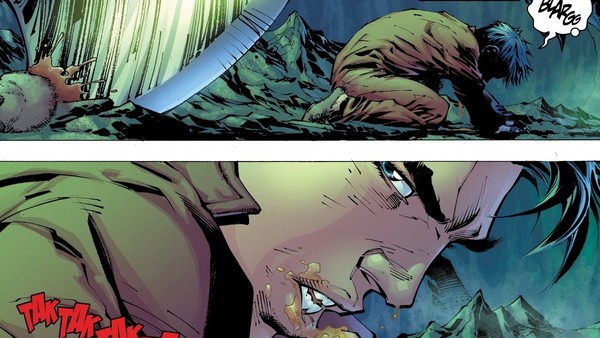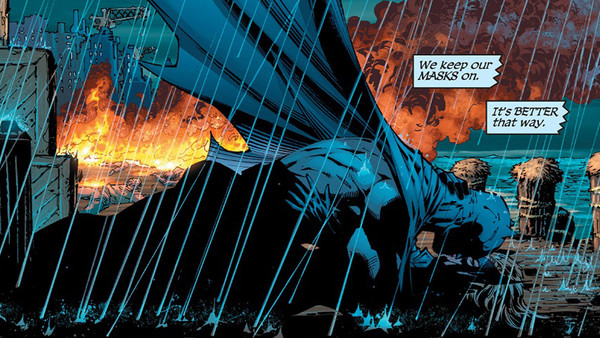Is This The Worst Batman Comic Ever?
2. How All Star Batman & Robin Became An All Star Mess

For all its potential, All Star just didn't work. What was meant to be a legendary coming together between two beloved industry figures resulted in a fudged, cringe-inducing Batman story that reads like a complete fever-dream with few redeeming features.
Situated in the same continuity as The Dark Knight Returns, All Star centres on a version of Batman during the burgeoning years of his crimefighting career. He's established and known to the Justice League, but he's yet to encounter any major supervillains. A familiar setting for Miller, you could argue, only there's nothing familiar about this incarnation of the character at all. He's spiteful, moody and potentially psychotic, so bizarre is his depiction in the comic.
The peculiar thing about All Star is that it doesn't play this version of Batman for laughs either. Miller has the Dark Knight refer to himself as the "goddamn Batman" all the time and yet, honest-to-god, it's meant to be taken seriously. He's just thoroughly reprehensible all around, but before we dive too heavily into what's wrong with Bruce Wayne's characterisation, let's take a look at the book's story itself.
As mentioned just before, All Star is set towards the beginning of Batman's crimefighting career in the same universe as The Dark Knight Returns, The Dark Knight Strikes Again, The Dark Knight III, and the yet to be released Golden Child. There's a rawness to the character, but not in the way seen in Year One or The Long Halloween. He's currently revelling in his mission - one he treats like a military campaign.

The book opens much the same way all of Dick Grayson's origins do - at a circus performance that goes tragically wrong. Dick's parents are killed, and Batman apprehends the killer. This all seems like fairly run of the mill stuff, until we see Bruce straight up abduct the newly orphaned boy, tell him that he's just been "drafted" into a war (all the while hurling ableist insults at him), and leaves him in the Bat Cave to fend for himself. Batman even says that, should Grayson ever get hungry while he's out, that he can eat the bats and rats in the cave.
Yep. Nothing to see here. Not at all. Not even when Batman chastises Alfred for giving Grayson clothes and actual food. This is absolutely normal behaviour for Batman, the World's Greatest Detective, to exhibit.
All of this sort of pales in comparison to what happens next, though, because instead of looking after the child, Batman decides to spend the night indulging in grievous bodily harm, intermingled with occasional bouts of maniacal laughter. He then stumbles across Black Canary, and after assisting her by taking down a bunch of thugs - who are all brutally caught in an explosion, by the way - the pair decide to roll around in the rain and get intimate, all the while Batman lauds the fact they've kept their masks on throughout.

Soon after we discover that it was the Joker who employed a hitman to assassinate the Graysons, but the story somehow gets even more derailed than it already has at this point, by focusing on a feud with the Justice League. Miller's characterisation of Wonder Woman is hilariously one-note, while the likes of Superman and Green Lantern are only present to make the Dark Knight seem cool and superior.
Batman's interactions with the League in this book almost makes it seem like Miller is contemptuous of those other characters. The Dark Knight - joined by Robin, finally - paint themselves yellow to give Green Lantern a verbal dressing down, and then a physical one, when the Boy Wonder steals his ring.
Oh, and an admittedly brilliantly designed Batgirl shows up, but does fairly little other than get captured at the end of the comic. The book teases a future confrontation with the Joker, and even an interaction with Catwoman, but none of it ever came to pass - so reviled was the story upon release.